The beginnings of football – considered the most popular sport globally – can be traced to ancient and medieval times, although these were games far removed from the modern rules of football. The ball game was widespread in the British Isles in the early modern age. In the 19th century it was divided into two distinct sports: football played with feet and rugby, which also uses hands; the first football clubs in England formed in the 1860s.
Simultaneously, associations favouring athletics or gymnastics were being created in Hungary, and football only arrived in the country in the 1890s.
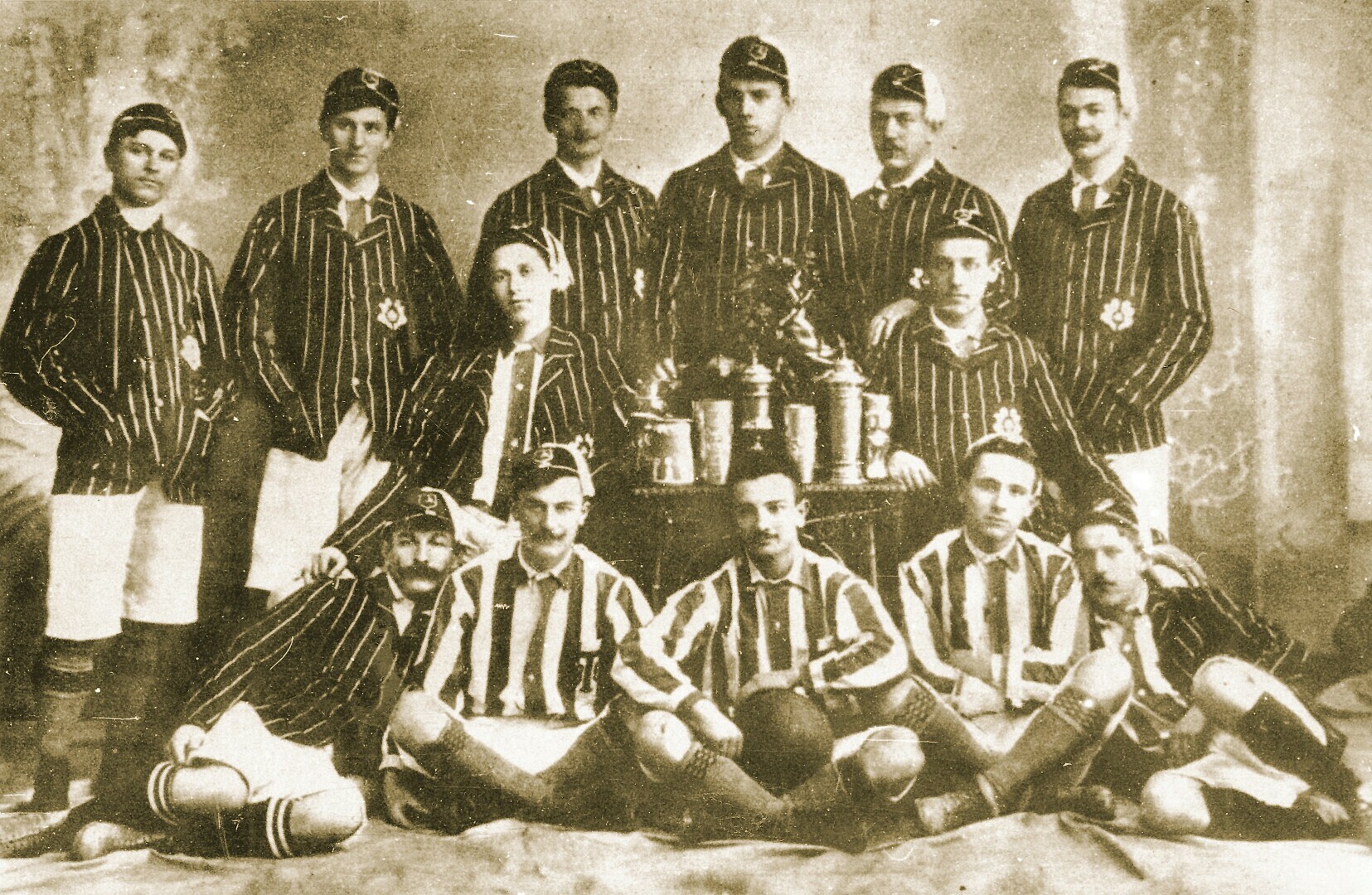
BTC, the first champion of Hungarian football in 1901 (Source: mlsz.hu)
In his book "Így lettem olimpiai bajnok” ('How I Became an Olympic Champion') written in 1955, Alfréd Hajós described the birth of Hungarian football with these words: "The Swiss architect, Ferenc Stobbe who lived in Budapest, worked with Rezső Ray whose son studied at the Technical University of Zurich. The young Ray visited his parents in the winter of 1896 and brought a football with him to practice his favourite sport during the winter break. Ferenc told Ray Stobbe that a regular football ball had not been used in Hungary yet. Therefore, Stobbe asked him to visit the gymnasium of his club, the Budapest Gymnastics Club, on Markó Street and tell its members the rules of the game. Gymnasts, wrestlers, and boxers performed the prescribed exercises in a disciplined and diligent manner," writes Alfréd Hajós in his memoir. Then he continues:
“He just appeared in the door with his young friend Ferenc Stobbe, who threw a football into the crowd without a word. Discipline and order became a thing of the past as everyone tried to get a hold of the ball for themselves. Somehow, the ball fell to the ground and was then instinctively passed by foot between the players. This is how Hungarian football was born on the evening of 18 December 1896. ”
The architecture student successfully introduced football to a couple of enthusiastic young Hungarians, including Alfred Hajós. Our Olympic champion also participated in the first match in Hungary on 9 May 1897, on a pitch in Millenáris, in which the first and second teams of the Budapest Gymnastics Club competed. Alfréd Hajós also played in the first international game organised in Hungary, between BTC and the Cricket and Football Club of Vienna on 31 October 1897.
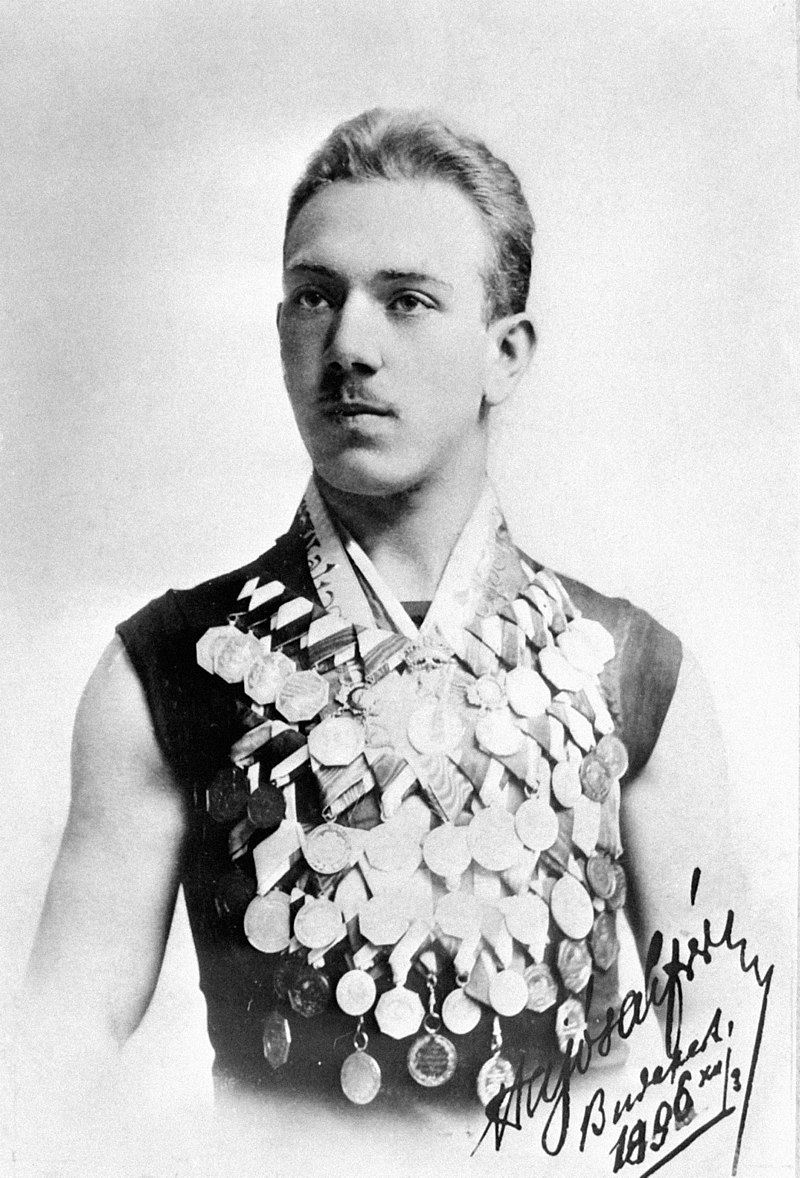
Alfred Hajós in 1896
Millenáris was transformed into a “stadium” – at least to the standards of the age – by the Budapest Racetrack Association, which set up a wooden structure with a capacity of 2,000.
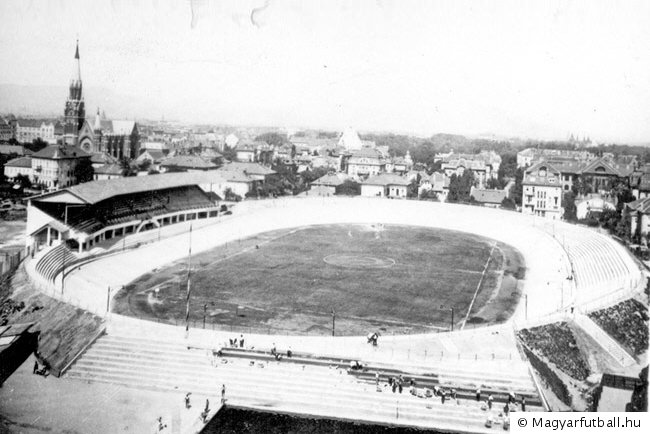
The Millenáris Pitch in Zugló in 1930 (Source: magyarfutball.hu)
Beyond photos of the two teams, the weekly Sport Világ published a two-page summary of the match that ended in a 2–0 win for the Viennese. Football became one of the most popular team sports in Budapest extremely quickly. It was popularised because its rules are easy to learn and easy for spectators to understand.
At the turn of the 19th and 20th century football clubs sprung up everywhere in Budapest. Of these Ferencvárosi Torna Club – FTC has grown to international fame with its subsequent success. The game attracted not only an increasing number of athletes but even more spectators. In a few years, football became a sport for the masses.
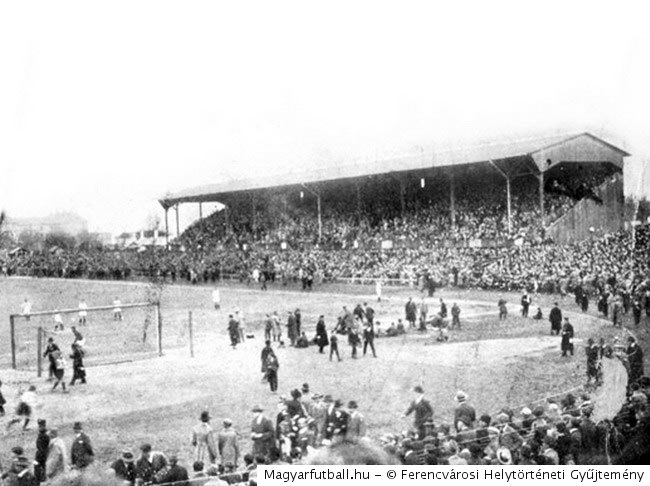
The FTC Stadium in 1925 (Source: magyarfutball.hu, Ferencváros Local History Collection)
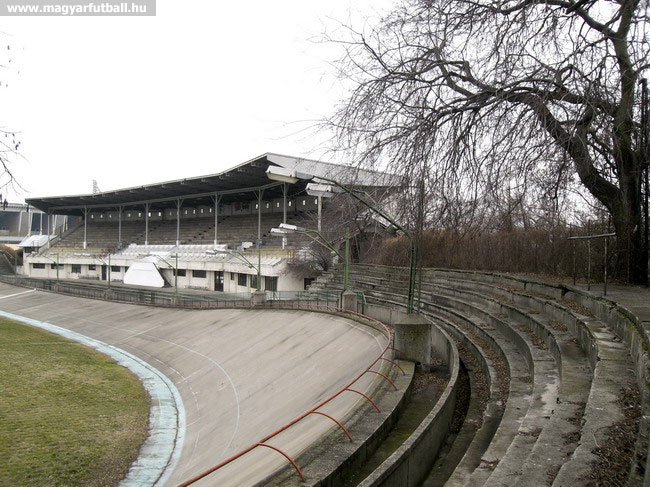
The Millenáris Pitch in 2008 (Source: magyarfutball.hu)
After a series of friendly matches, the time to announce a national championship came in 1901. To control the competition and enforce rules, it was necessary to establish the Association of Hungarian Footballers. The inaugural meeting of the association was held on 19 January 1901, and the rules of the spring-autumn championship were announced after the first council meeting on 4 February. Only teams from Budapest entered the first tournament.
The competition allowed a player to appear in a first and a second division team at the same time. As a result, some players appeared in the first division in the morning and the second in the afternoon.
In the first league game, the teams of BTC and BSC (Budapest Sports Club) played each other on 17 February 1901 on the Millenáris Pitch.
The clash ended in a 4-0 win for BTC. The BTC team won the championship, ahead of the Hungarian Swimming Association (MÚE) and the FTC teams. Zoltán Halmay is of note from the starting eleven of the MÚE team. Three years later, he won two heats at the 1904 Los Angeles Olympics, competing as an athlete of the Magyar Testgyakorlók Köre (MTK – 'Hungarian Training Club').
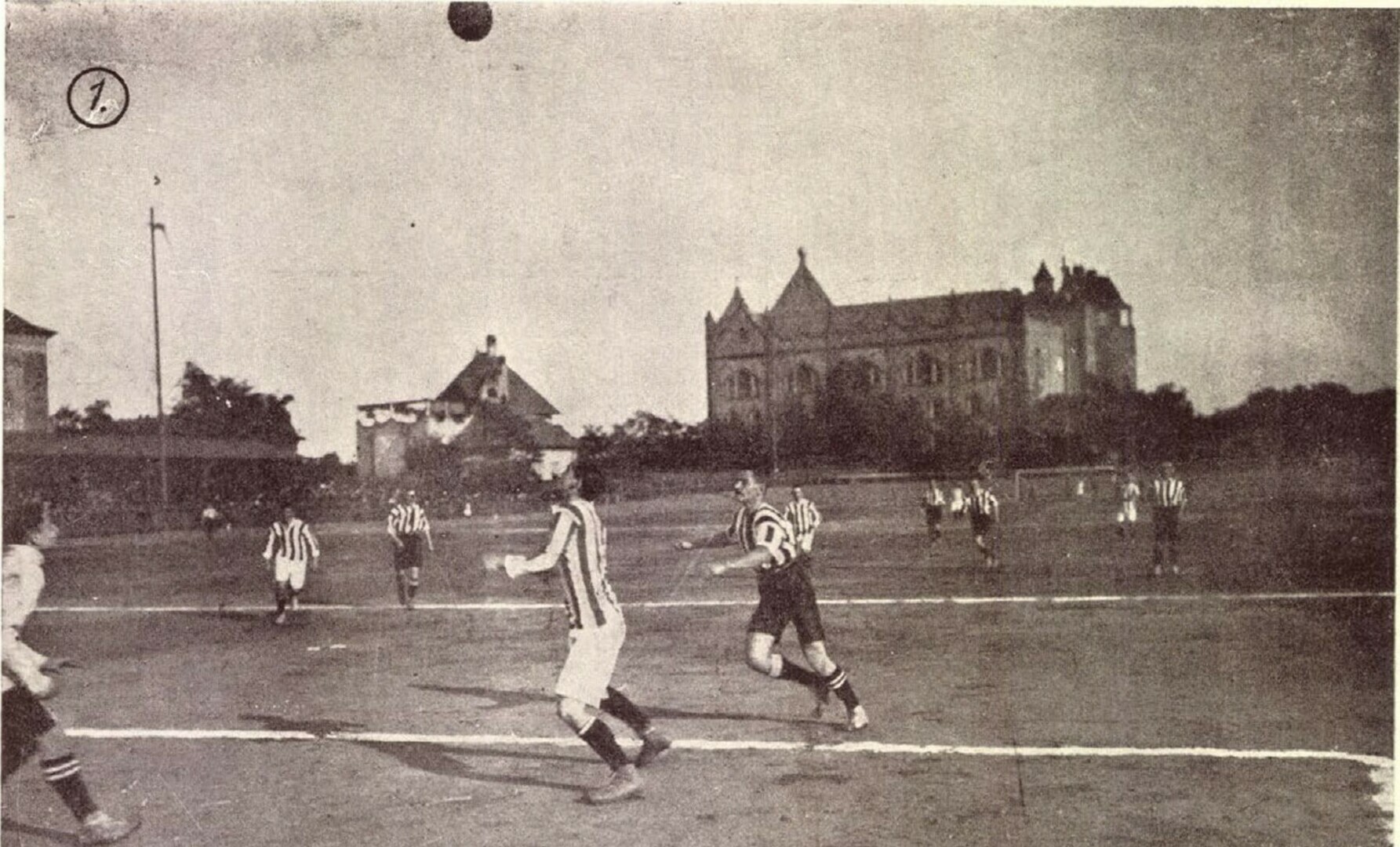
BTC – FTC, a scene from a match in 1908 (Source: mlsz.hu)
The national team's first official game took place on 12 October 1902 in Vienna against the Austrians. In the clash of the two members of the Dual Monarchy, Hungarians achieved a 5-0 victory with superior game skills.
The top scorer of the 1901 and 1902 seasons was Miltiades Manno, who scored 17 goals in the first and 10 goals in the second year, while also winning championships in speed skating and rowing. Until 1908, members of the championship-winning team were not given a medal but a championship cap. Alfréd Hajós played an outstanding in the first decade of Hungarian football. He not only played as a striker in the first match of the Hungarian national team but also wrote a report on the match for the weekly Sport Világ. He ended his athletic career in late 1903.
After his retirement, he became the national football team coach in 1906 and even acted as referee for a match. He later served as vice-president of the Hungarian Football Association between 1920 and 1924. Alfréd Hajós took second place with his BTC team in his last year as an active athlete. FTC won the championship with MTK grabbing third place. The latter two teams became the defining ensembles of the first half of the twentieth century; their matches have become known as Eternal Derbies.
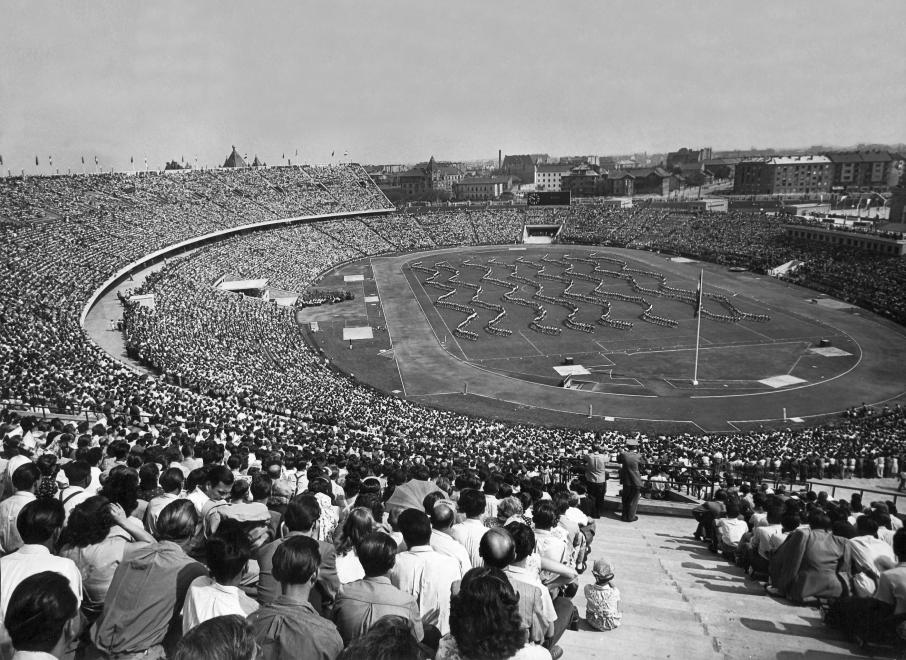
The Népstadion, which could accommodate 70,000 spectators, was opened on 20 August 1953 as part of a sports festival (Photo: Fortepan/No.: 22947)
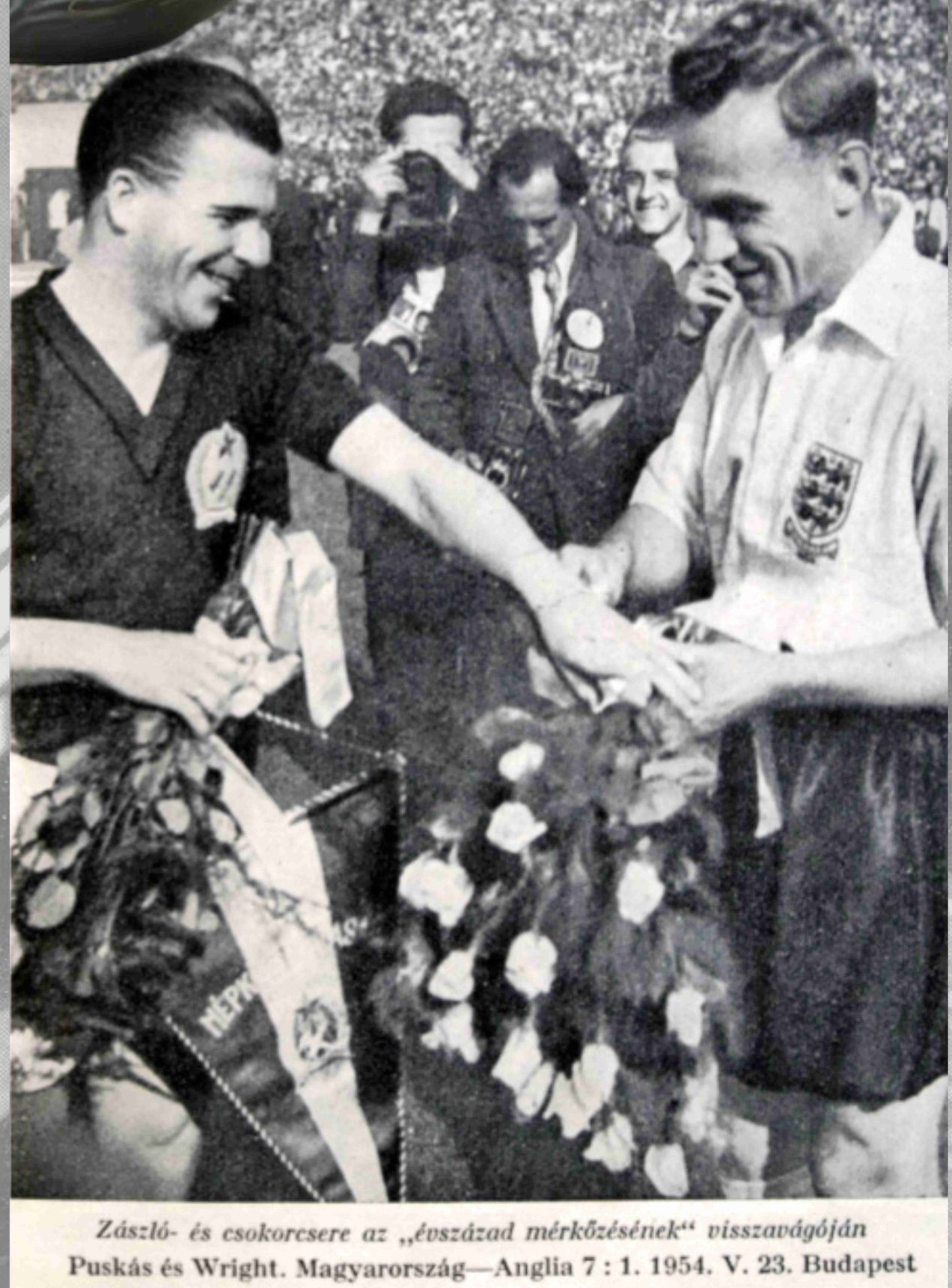
Ferenc Puskás in 1954 (Source: A magyar labdarúgás, 1955)
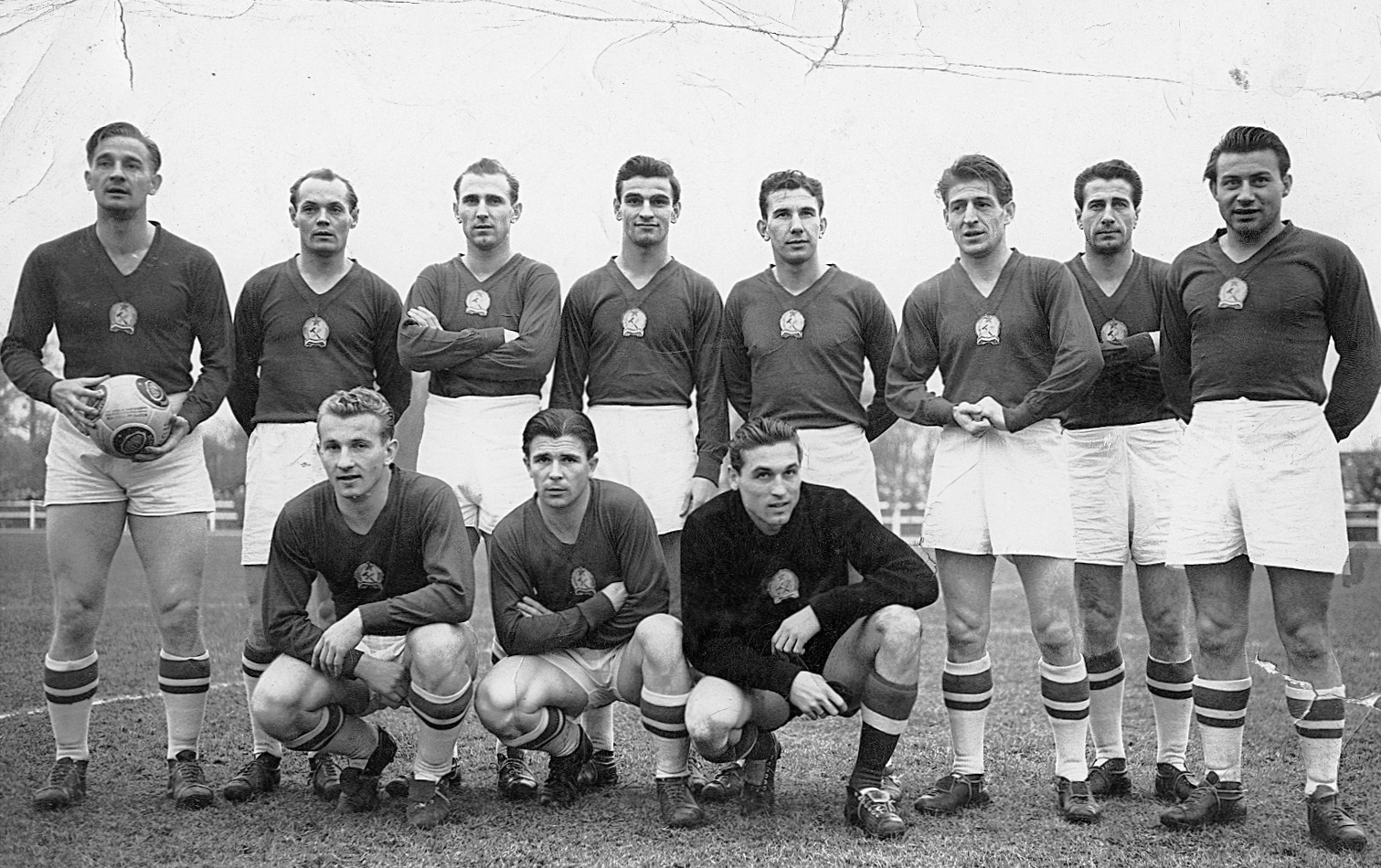 The golden team in 1953: Gyula Lóránt, Jenő Buzánszky, Nándor Hidegkúti, Sándor Kocsis, József Zakariás, Zoltán Czibor, József Bozsik, László II Budai, squats: Mihály Lantos, Ferenc Puskás, Gyula Grosics (Photo: Fortepan/No.: 13743)
The golden team in 1953: Gyula Lóránt, Jenő Buzánszky, Nándor Hidegkúti, Sándor Kocsis, József Zakariás, Zoltán Czibor, József Bozsik, László II Budai, squats: Mihály Lantos, Ferenc Puskás, Gyula Grosics (Photo: Fortepan/No.: 13743)
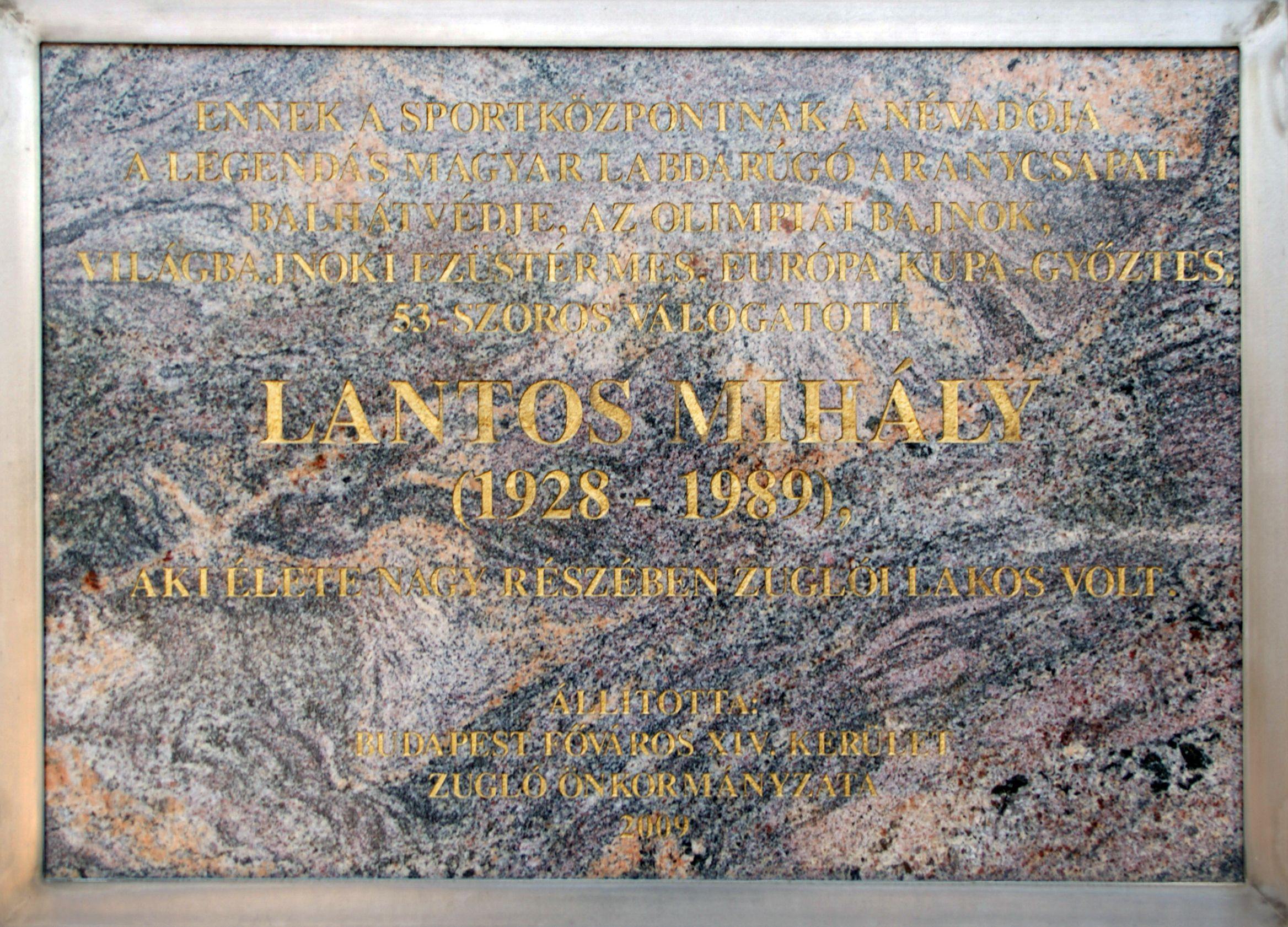
Memorial plaque of Mihály Lantos at the Zugló Sports Centre

The Lantos Mihály Sports Centre is located in the 14th District (Photo: mtkbudapest.hu)
To date, FTC has won 31 championships, while MTK has won 23 titles. The later history of Hungarian football has brought many successes, and just as many failures. By the second decade of the 21st century, all sports associations with a history of at least a hundred years now play their matches in new stadiums. The names of these arenas, commemorate the stars of Hungarian sports: Ferenc Puskás, Nándor Hidegkuti, Ferenc Bozsik, Ferenc Szusza, Rudolf Illoszky. The Zugló Sports Centre, the home of athletes and fencers, was named after Mihály Lanton, the outstanding defender of the golden team and MTK in 2008.
Cover photo: BTC – FTC, a scene from a match in 1908 (Source: mlsz.hu)

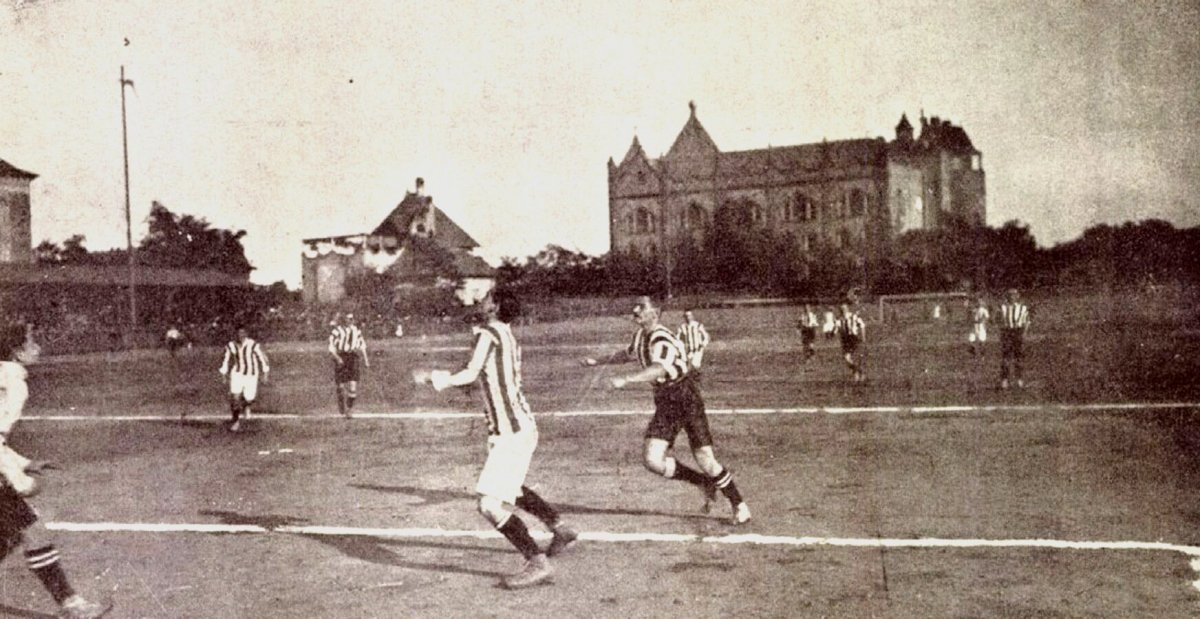



































Hozzászólások
Log in or register to comment!
Login Registration